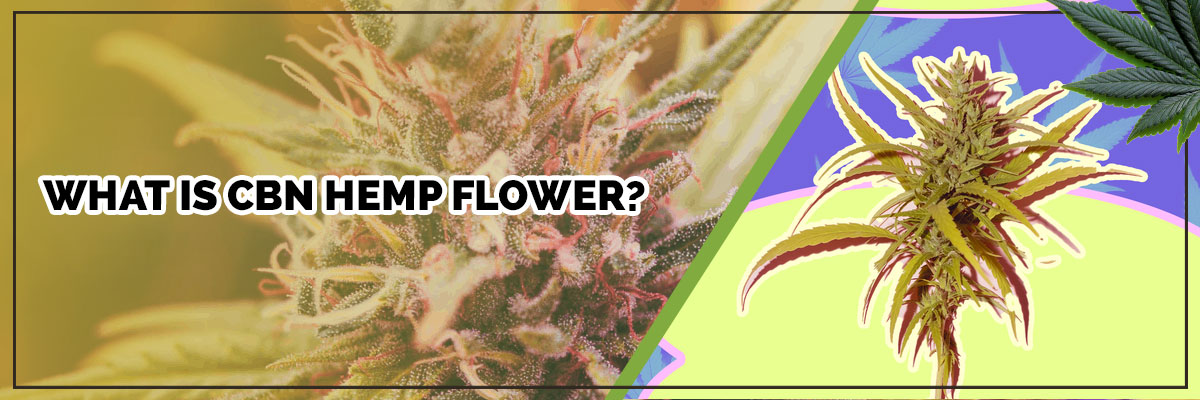
When hemp was first legalized, all eyes were on cannabidiol or CBD. Making up more than 20% of hemp’s cannabinoid composition, CBD was thought to be the most important organic compound in the hemp plant. But as studies would prove, prominence doesn’t always equal importance.
Of course, CBD offers a range of benefits that can help improve your overall wellness. But it’s not the only organic compound worth looking into. For instance, researchers have proven that other cannabinoids like cannabinol or CBN play an equally important role — despite making up less than 1% of hemp’s cannabinoid content.
Cannabinol represents just one of the many hundreds of cannabinoids in the hemp plant. However, unlike CBD which makes up more than 20% of hemp’s cannabinoids, CBN’s concentrations dwindle below 1%.
But that hasn’t stopped the organic compound from making rounds on the internet. And that’s mainly because researchers have pinpointed CBN as one of the main contributors to hemp’s effects on sleep quality and duration.
While it’s not entirely clear how CBN works to improve sleep patterns, researchers can say with certainty that the cannabinoid works on both CB1 and CB2 receptors in the brain and central nervous system.
For this reason, vendors often market CBN as a powerful solution against sleep disturbances and problems with sleeping patterns and habits. But that’s not all it can do. Here are some other alleged benefits of CBN:
Yes and no — it depends on how they’re made. In the hemp plant, CBN exists as CBNA or cannabinolic acid. This precursor does not provide the same effects that CBN does and requires activation through a process called decarboxylation.
But before CBNA even exists, it starts off as THCA. Yes, you read that right — CBN and THC share a precursor. If that’s not ringing any bells, it’s worth remembering that THC is the main psychoactive compound found in the Cannabis sativa L. plant.
And while the same does exist in hemp, the concentrations of THC are so low that they produce zero noticeable effects. That also explains why CBN concentrations in hemp are so low.
When THCA is exposed to heat, it turns into THC. But when exposed to UV radiation, THCA converts into CBNA. Then, when CBNA gets subject to sufficient heat, it turns into CBN.
According to some experts, THCA also naturally converts to CBNA over time. That’s why most people who want to enjoy their CBN dose via smoking raw hemp flower would probably get the best results out of slightly aged buds.
Unfortunately, manufacturers struggle to produce CBN isolate products because of the compound’s scarcity. For this reason, many labs turn to synthesize their own CBN from natural raw materials.
Technically, it should be. The 2018 Farm Bill officially legalized hemp and all of its parts. A derivative of the Cannabis sativa L. plant, hemp is defined as any part of the cannabis plant that contains 0.3% THC or less.
If a plant sample contains more than 0.3% THC, it falls under marijuana territory which remains subject to strict laws and restrictions across the United States.
Keep in mind that CBN (as well as all of the other cannabinoids you know and love) occur naturally in marijuana. So for a CBN product to be considered legal, it would have to be derived from hemp.
But despite being legal on a federal level, various localities, cities, and states have imposed their own rules on the use of CBN products. The FDA also warns that CBN has not been evaluated for safety, so they don’t endorse it as a food or drink product, or as a supplement.
So technically, CBN-infused food and drink items, as well as products made to look like supplements are illegal based on FDA standards. This also explains why vendors often walk on eggshells and avoid various terms and phrases when marketing certain products.
There’s no specific hemp flower strain that’s just inherently rich with CBN. Remember that the cannabinoid expression of each individual cultivar depends on the growing techniques used to farm it and the conditions where it was grown.
According to experts though, hemp flower that maxes out the THC limit of 0.3% might contain slightly more CBN, considering how these two compounds share a similar ancestor.
The best way to find CBN-rich hemp flowers would be to read the reports. Lab reports provide a more detailed idea of what you can expect to get out of your hemp flower haul. And again, slightly older hemp flowers may provide more CBN due to the natural conversion that occurs when THCA sits around for too long.
If you’re struggling to fall asleep or stay asleep, CBN might provide some relief. Said to support healthy sleep patterns, CBN has earned a reputation as a must-try across the entire hemp market.
Although elusive and rare, CBN gets major attention for its relevant properties. Fully understanding where it comes from and how to enjoy its full benefits should help you truly appreciate this powerful organic compound.